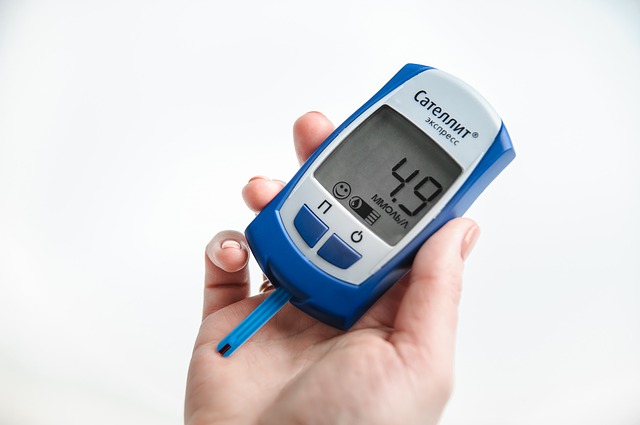
Saunas are a great way to relax whether its just after you’ve hit the gym or just as your weekly relaxing routine. However, is important to know the effect that a nice sauna session might have on your health, especially if you are diabetic.
Recently there is a lot of mixed information regarding the use of saunas for diabetics. Many claim that saunas are good for diabetics and others claim they are in fact harmful for diabetics. In this article we’ll take a look into how saunas impact diabetic users.
Contents
- An overview of Saunas - what are saunas and how do they work?
- The benefits of using a sauna
- Diabetes and Saunas
- Physiological effects from Saunas
- Heat and Insulin Absorption
- The effect of saunas on Type 1 and Type 2 Diabetes
- Infrared Saunas and diabetes
- Use with moderation
- Informed Decisions with Your Physician
Before getting started it is important to note that diabetics should always consult their physicians prior to the use of a sauna. It is also important to be aware of the benefits and concerns that are associated with the use of a sauna for diabetics.
An overview of Saunas - what are saunas and how do they work?

Saunas are generally a wood paneled room that are heated either through the use of wood stove or an electric stove. Another type of sauna is an infrared sauna, which release heat that is directly absorbed by your body. For saunas that utilize a stove they generally also have a set of rocks that are heated over which water is poured. The water that is poured onto the heated rocks releases moisture into the air.
The temperature that a sauna can reach varies based on its location however according to research that was conducted in Columbia university it can range from 160 Fahrenheit (71 degrees Celsius) to 200 Fahrenheit (93 degrees Celsius).
In addition to this the level of humidity in saunas can range from 5 percent to 30 percent. This one of the differentiating factors of saunas from steam rooms. In steam rooms, moist heat is used, and they have a humidity rate of 100 percent.
Saunas originated Finland and were used to encourage sweating and help with better breathing by breathing in warm air. Saunas use dry heat but still retain some moisture which can be helpful in improving breathing and in facilitating relaxation.
The benefits of using a sauna

There are many different benefits to be gained from the use of sauna these not only include relaxation and rest after a workout but also other health benefits. For instance, the American Heart Association's journal published a study in which they found that patients who had congestive heart failure that used a sauna for 15 minutes regularly, they experienced fewer pre-ventricular contractions that were harmful as compared to those who did not sue the sauna.
Additionally, saunas help increase and promote sweating and the opening of your pores which cleanses your skin. Blood flow and circulation are also promoted due to the high temperature of the sauna, which helps with feeling energized as well. The use of a sauna also encourages overall well-being.
A study that was conducted with 46 chronic pain patients discovered that they experienced fewer incidences of pain, anger and depression while using infrared saunas on a weekly basis.
Diabetes and Saunas

So, what exactly is the impact of saunas on diabetes? Although saunas can be very beneficial, it is important to understand their impact on your specific situation before you use them. Always make sure to consult your physician prior to using saunas or other similar treatments.
In terms of saunas and diabetes, there are many mixed opinions in this matter, so let’s take a deeper look at what saunas do and how they can impact a diabetic person. In order to understand the impact on a diabetic person of saunas we must consider the physiological effects that saunas have on users.
Physiological effects from Saunas

The human body is a very well-regulated system and when it is exposed to different external stimuli and environments the body adapts and works to restore its balance. However, external environments do have an impact on how our bodies function.
Saunas generate an intense amount of heat and when the human body is exposed to such high temperatures this results in physiological reactions within the body. One of main reactions of the body to this increased temperature is the dilation of capillaries.
The dilation of capillaries causes the heart to work harder to pump blood through them. For diabetics heart problems and high blood pressure are common concerns so potential threat that the use of saunas present is evident. In addition to this, saunas cause a lot of sweat to be released though the body’s pores which can cause dehydration. Dehydration is a severe threat for diabetics as well.
One of the major impacts that saunas have are on insulin absorption for diabetics. This can result in many causes of concern for diabetic users of saunas. Let’s take a look at the impact of heat on insulin absorption.
Heat and Insulin Absorption

Heat and increased temperatures have a strong impact on insulin and in turn on blood glucose levels. This is immensely important for diabetics to monitor as a change in blood glucose levels can be very dangerous for them.
According to a study conducted by the British Medical Journal, the blood glucose concentration is affected by the rate of insulin delivery from the injection site. This means that exercise speeds up the absorption of insulin whereas staying at rest slows down its absorption.
Due to the fact that blood flow in the skin is dependent on the external temperature, the high temperatures in the sauna increase blood flow, which in turn increases the absorption rate of insulin.
The following are some of the major impacts that saunas have on insulin and blood glucose levels:
- Dehydration and excessive sweating: The heat in saunas cause you to sweat excessively and can be dehydrating, this causes a decrease in blood volume. A decreased blood volume means a higher concentration of blood glucose which also leads to hyperglycemia
- Hormonal changes: The heat from saunas can also increase certain hormones which clash with insulin such as growth hormone and glucagon, which can have a hyperglycemic effect.
- Dilated blood vessels: As mentioned above heat can result in dilated blood vessels and increases the absorption of insulin this can cause fluctuations in blood glucose levels and even lead to hypoglycemia.
- Dry heat: As saunas use mostly dry heat, it can dry out the skin, causing skin conditions or wounds. These can be very dangerous for diabetic people.
Now let’s take a look at how saunas impact the two different types of diabetes.
The effect of saunas on Type 1 and Type 2 Diabetes

The main difference between type 1 and type 2 diabetes is the production of and absorption of insulin. In type 1 diabetes the body is unable to produce insulin and so those who are type 1 diabetics rely on injected insulin. In comparison type 2 diabetics still produce insulin but face insulin resistance, where they are unable to use it effectively.
For type 1 diabetics the use of saunas can be very dangerous as their blood glucose levels are controlled by injected insulin. Due to the heat of the sauna and increased absorption of insulin, they are at risk of having low blood glucose levels and having hypoglycemia. This can be very dangerous for them.
In the case of type 2 diabetics, if they are also injecting insulin then they will also experience the same effects. Same is if they are taking medications to increase the absorption of their insulin.
But if they are using dietary changes and lifestyle changes to manage their diabetes, then saunas can also be helpful for them in trying to increase their blood glucose levels. As doctors mention moderate physical exercise to regulate blood glucose levels.
However, it is very important to consult your doctor before you attempt to use saunas to regulate you blood glucose levels. Also ensure that you stay hydrated and monitor your blood glucose levels to avoid any health risks.
Infrared Saunas and diabetes

Infrared saunas work similar to regular saunas and should be used with caution as well. As mentioned above they pose the same risks and concerns that regular saunas do, especially for those using insulin injections. However, as mention above for those with type 2 diabetes and using dietary and lifestyle changes to manage their blood glucose levels, infrared saunas maybe a good option.
Saunas that use infrared lamps are generally less hot as compared to regular saunas and so the heart does not have to work as hard. Additionally, it is helpful with diabetic neuropathy and can be beneficial for those who suffer from poor blood circulation to their extremities such as their feet.
Use with moderation

In order for diabetics to reap the benefits of saunas, the level of heat and intensity and well as time should be carefully monitored and all done in moderation. With approval from your physician and careful moderation you can enjoy using saunas too.
However, it is important for diabetics to remember to stay hydrated, monitor their glucose levels and to replenish their body’s minerals.
Informed Decisions with Your Physician

If you are a diabetic looking to use a sauna, be sure to know your condition and speak to your doctor first. Keep an eye out for symptoms that may be a cause for alarm. It is best to look for a sauna that uses infrared lamps as these are most beneficial for diabetics. Always ensure to stay hydrated and replenish your body with fluids and minerals after the sauna.





